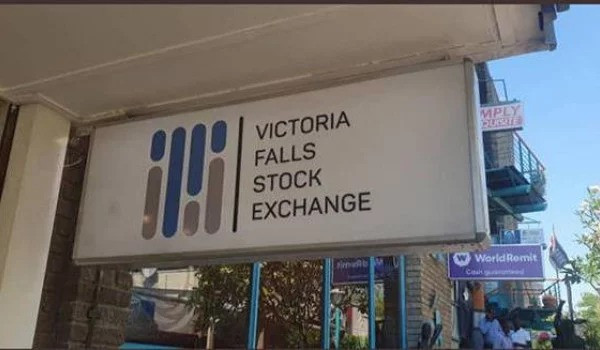
THE United States dollar-denominated offshore stock exchange, Victoria Falls Stock Exchange (VFEX), has been ridiculed as a loss-making vehicle for stock investors in the short-term due to the negative performance of listed counters this year.
While speculations predict the bourse to be a cash cow in the long-run, it is imperative to assess why most VFEX-listed counters are operating in negative territory in the present year.
The offshore market was officially launched on December 2 2021, with Caledonia Mining Corporation Plc listing on the bourse that very day before commencing trade on December 3 2021. Fast-forward to 2023, the market boasts of 12 listings, with nine having migrated from the Zimbabwe dollar (ZWL)-denominated bourse, Zimbabwe Stock Exchange (ZSE), while two were secondary listings along with one fresh listing.A total of five stocks joined the VFEX this year, four of which migrated from ZSE while one was the fresh listing.
The VFEX has grown from a market capitalisation of US$43,6 million in 2021 to US$1,4 billion. Meanwhile, the ZSE flaunts of a US$2,4 billion market capitalisation, which is only US$1 billion bigger than the VFEX despite being the main bourse and having the most listings. However, while the VFEX has grown from being a minute market to having a market capitalisation that is 60% that of ZSE, the bourse has failed to yield positively for investors over the years. Since the beginning of 2023, the mainstream VFEX All Share Index has suffered a -20% decline, with seven counters sailing in negative territory on a year-to-date basis while four are sailing in positive waters.
Note that the year-to-date computation for companies listed during the year refer to the date of listing to-date. The overall -20% decline of the VFEX, is however, mostly attributed to companies listed on the bourse this year, and thus important to assess why the respective companies have suffered a bear-run. The top-four worst performing counters on VFEX, Axia, FCA, Innscor and African Sun all listed this year and have all succumbed to -55.4%, -55%, -46.1% and -33.3% losses respectively.
By February 27, before the first additional counter this year, Innscor, VFEX boasted of an 11% year-to-date return. Before then, BNC, which is currently the fifth worst performing counter YTD, was already dwindling while the All Share Index was maintaining momentum.
The listing of the aforementioned counters attracted a bear-run, which saw the bourse reversing its positive momentum into a blood-bath. However, the bear-run was induced by profiteering sell-offs after the counters migrated from the ZSE at a direct conversion of price using the interbank market.
This was at a time the exchange rate premium from the parallel market was hovering at 100%. Therefore, investors would hoard shares on ZSE before the company moves to VFEX, then dispose the shares and acquire USD’s at a 100% arbitrage benefit. For example, FCA listed on VFEX at a share price of US$0,04, which was equivalent to the interbank valuation of the ZSE closing price at the date of listing. The parallel market equivalence was US$0,02, and FCA was expected to use market dynamics in pricing to avoid arbitrage opportunities that stimulated the bear-run. To-date, FCA has shed off -55% and sailed stable at an average of US$0,019 in June, which was the market-determined valuation. The other counters that migrated from the ZSE this year have also gone through the same fate, weighing down the All Share Index and this reflects how the bourse is performing negatively due to pricing disparities rather than weak market or company fundamentals.
- Caledonia profits up 16% after record production
- Power crisis pushes Blanket Mine into fresh costs
- Caledonia profits up 16% after record production
- Caledonia splurges US$4m on Zim gold mine
Keep Reading
Save for the counters introduced this year, the VFEX is more stable than the ZSE. Factoring out the repricing induced sell-offs, the VFEX overall index would offer a positive return while the ZSE has reversed a 112% US$ YTD return to a loss of -5% in under 2-months due to volatility.
Duma is a financial analyst and accountant at Equity Axis, a leading media and financial research firm in Zimbabwe. — twdumah@gmail.com or tinashed@equityaxis.com, Twitter: TWDuma










